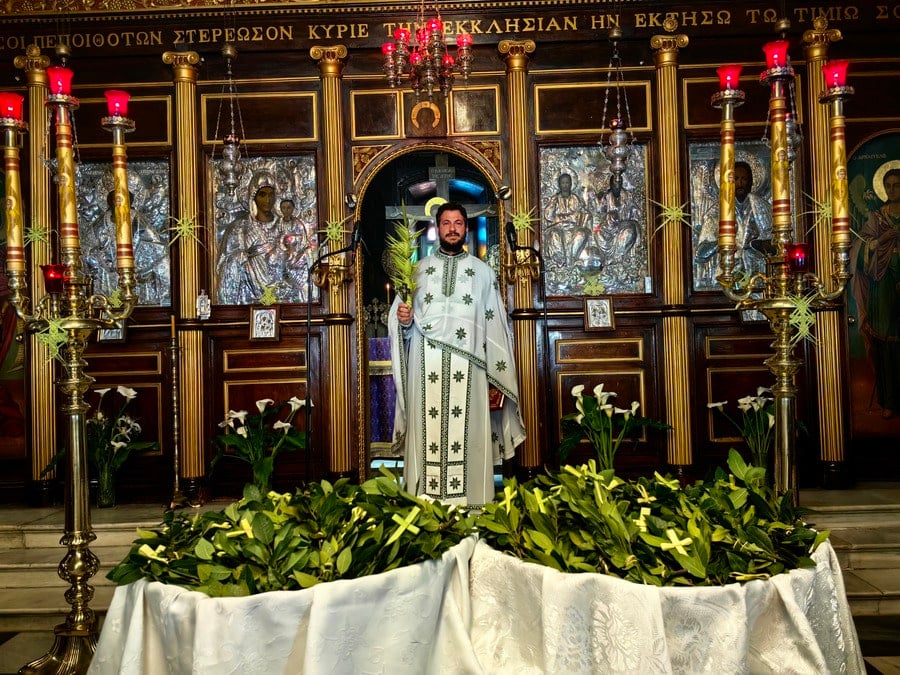

This Sunday, April 13, holds a special significance across the Christian world, including Greece, as both Orthodox and Catholic believers celebrate Palm Sunday together.
This is a rare occasion as most years, Orthodox Churches celebrate Easter and the Holy Week that leads to it on a different date than Western rite Christians.
In Greece, Orthodox Christians as well as faithful from all other denominations and traditions have been going to churches across the country, remembering and celebrating the triumphant entry of Jesus Christ into Jerusalem. According to Christian tradition, this event was the beginning of the Holy Week, which led to Jesus’ crucifixion, death and eventual resurrection.

This celebration is an important day for all Christian Churches, including the Greek Orthodox, as it mentions a crucial event in Jesus’ life as described in all four Gospels. There, Jesus entered the holy city of Jerusalem just days after raising Lazarus from the dead and shortly before the Last Supper and the start of His Passion. Riding on a donkey, an animal used to symbolize peace rather than confrontation and war, Jesus was greeted not as an earthly conqueror but as a holy king.

Crowds eagerly welcomed Him, laying down cloaks and palm leaves in His path, proclaiming Him as their king and Lord – a scene that is re-enacted and remembered in today’s services across Greece.
The Orthodox Church particularly emphasizes the account from the Gospel of John, linking the entry of Jesus to Jerusalem directly to the miracle of Lazarus. Orthodox Church commemorated this miracle just yesterday on Lazarus Saturday, often with special sweet breads called lazarakia, a beautiful tradition in many parts of Greece.

Throughout Greece on Palm Sunday, from the smallest village chapels to grand cathedrals of big cities, this uniquely beautiful and joyous atmosphere was evident. Churches were filled with beautiful hymns glorifying Christ, such as the powerful “Vanquisher of Death.” A central part of the services is the blessing and distribution of intricately woven palm crosses, representing the palm leaves used by the people of Jerusalem 2000 years ago. Parishioners receive these blessed leaves following the end of the liturgies.
These blessed palms are connected to various customs depending on the region of the country. Many Greeks take them home, keeping them near icons or using them to decorate their houses, boat, and even animals throughout the year, seeking blessings and protection. Children often learn to make these palms leaves into traditional shapes like crosses or fish.

While Palm Sunday falls within the traditionally solemn period of Lent, a special tradition of the Church allows the faithful to eat fish, oil and wine on this day. Consequently, many families will gather today for a festive meal, often featuring the traditional favourite, fried cod with garlic mash (the famous Greek dish bakaliaros skordalia), while continuing to abstain from meat and dairy products until Easter Sunday.
Regional traditions add unique elements to this important day. On the Ionian island of Corfu, for instance, a grand procession featuring the relics of the patron Saint Spyridon takes place, a custom commemorating the island’s escape from a past plague attributed to the saint’s intervention.
As believers hold their palm crosses today, they celebrate Christ’s arrival and look forward with anticipation to the culmination of Holy Week – His Resurrection on Easter Sunday, celebrated next week by the entire Christian world in union this year.
